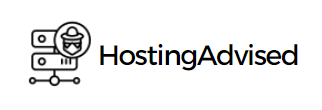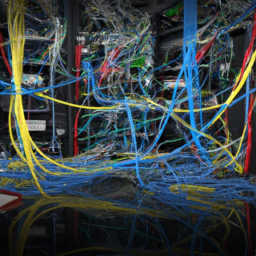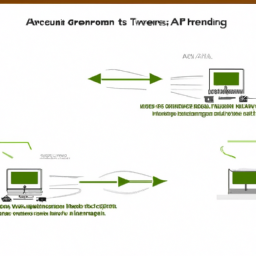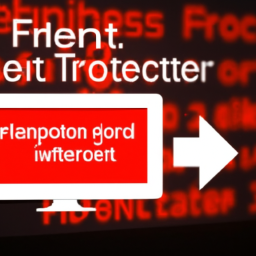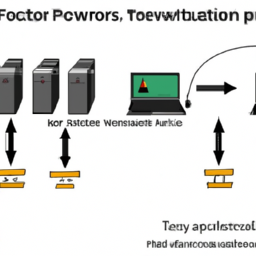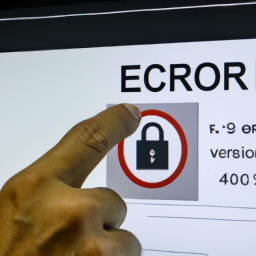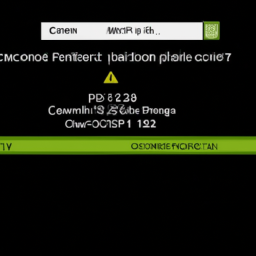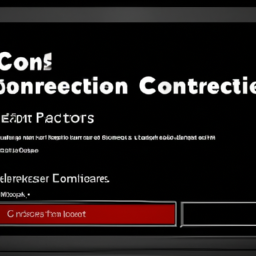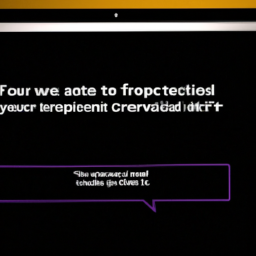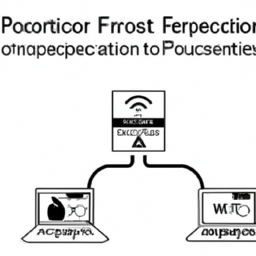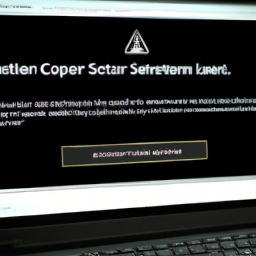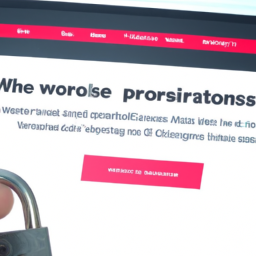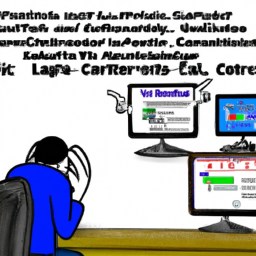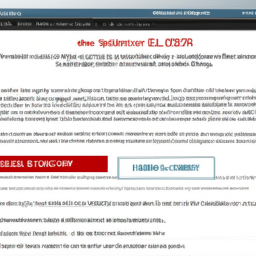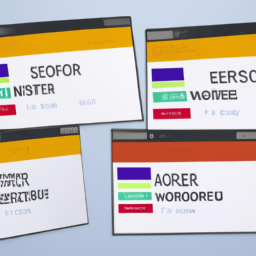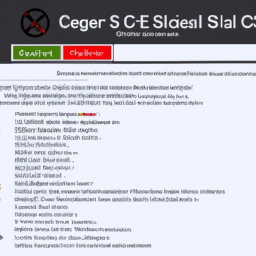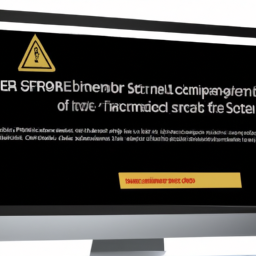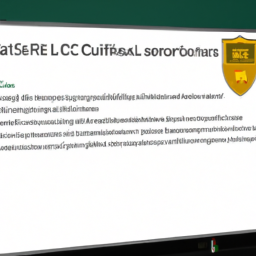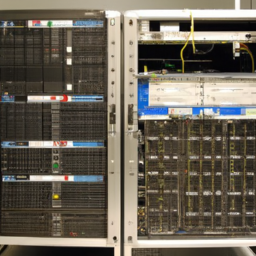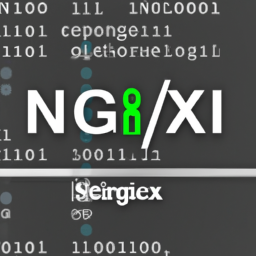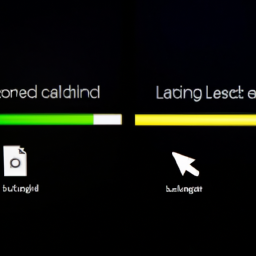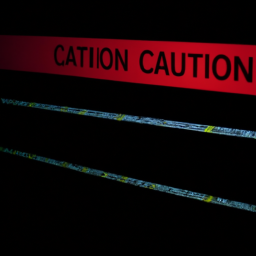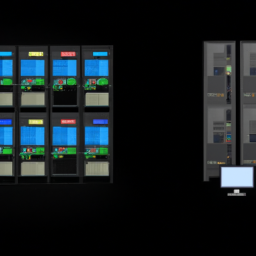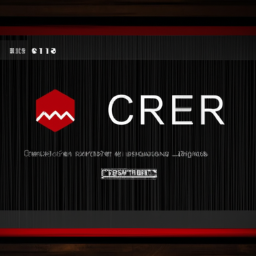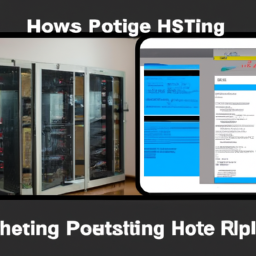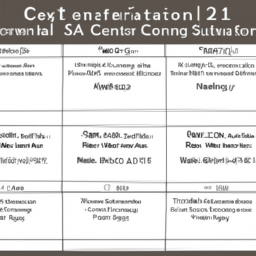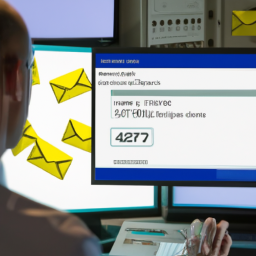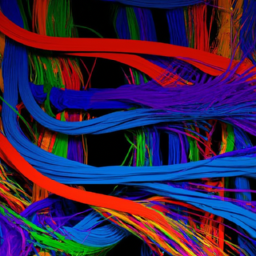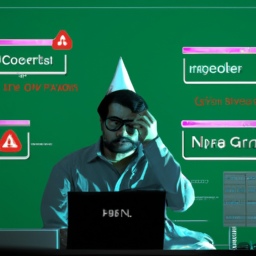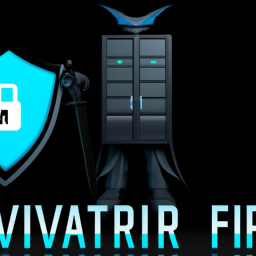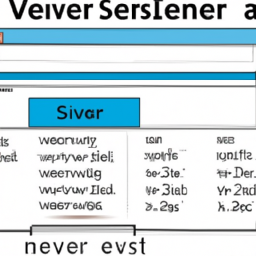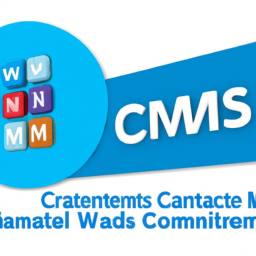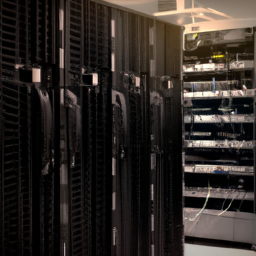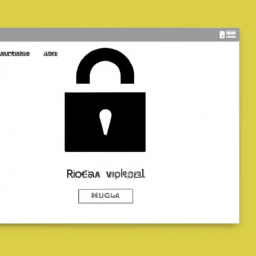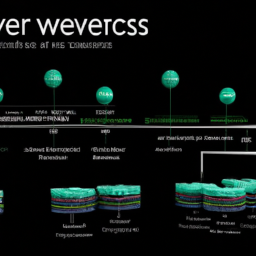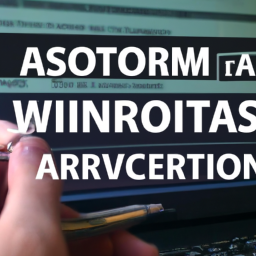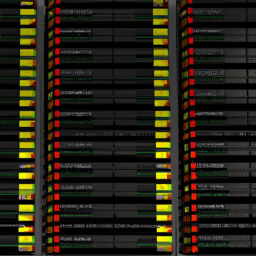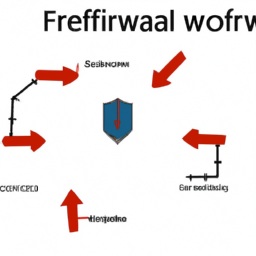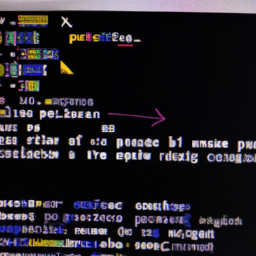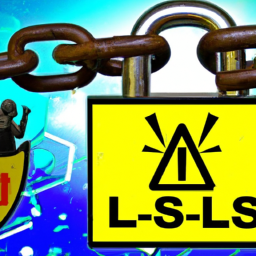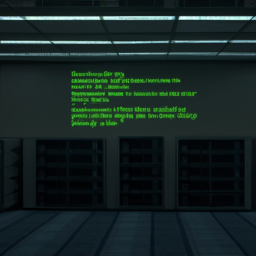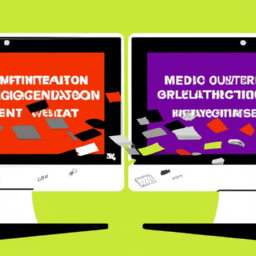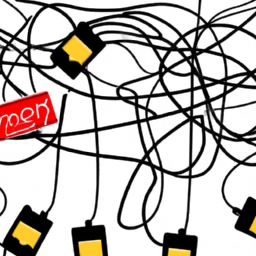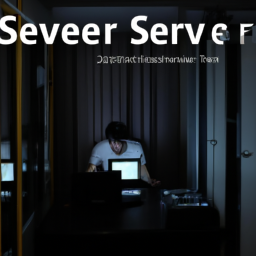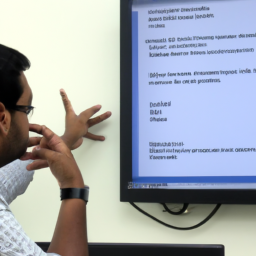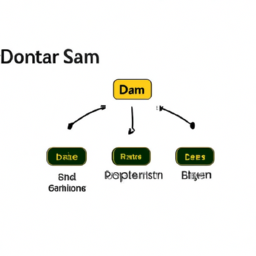Are you tired of being stuck in the endless loop of passive mode FTP connection problems? It’s like trying to navigate through a dense forest without a compass, constantly getting lost and frustrated. But fear not, because in this article, we are going to be your guiding light, helping you find your way out of this maze.
Imagine you’re a pilot trying to land your plane in a busy airport. You follow all the instructions, but for some reason, you keep missing the runway. This is exactly how it feels when you can’t establish a passive mode FTP connection. It’s a frustrating experience, but don’t worry, we’ve got your back.
In this article, we will dive deep into the technical aspects of passive mode FTP connections. We will walk you through the process of troubleshooting common errors, checking firewall and network settings, and verifying FTP server settings. We will also guide you in selecting the correct FTP client and provide you with tips on contacting your FTP service provider for support.
So, fasten your seatbelts and get ready to take off on a journey towards resolving passive mode FTP connection problems. Let’s dive in!
Key Takeaways
- Passive mode FTP connections can be challenging to understand and troubleshoot.
- Firewall and network settings can cause issues with passive mode FTP connections.
- Troubleshooting passive mode FTP connection problems may require checking DNS settings, troubleshooting proxy server problems, and verifying network stability.
- Using a compatible and updated FTP client is important for a successful passive mode FTP connection.
Understanding Passive Mode FTP Connections
Passive mode FTP connections can be a bit tricky to understand, but don’t worry, we’ll break it down for you!
To understand passive mode FTP connections, it’s important to grasp the concept of NAT traversal. NAT traversal allows network devices to communicate with each other across different networks.
When it comes to active mode vs passive mode, active mode FTP requires the client to establish a data connection to the server, while passive mode FTP requires the server to establish a data connection to the client.
In passive mode, the server listens on a specific port for incoming data connections from the client. This can sometimes cause issues if your firewall or network settings are not properly configured.
Now, let’s move on to checking your firewall and network settings to resolve any potential connection problems.
Checking Firewall and Network Settings
To configure your firewall for passive mode FTP, you need to allow incoming connections from the FTP server’s designated passive port range.
Check your firewall settings and make sure that these ports are open and allowed through.
Additionally, troubleshoot network connectivity issues by checking for any network devices, such as routers or switches, that could be blocking or interfering with the FTP connection.
Ensure that the FTP server and client are on the same subnet and that there aren’t any network configuration issues causing connectivity problems.
Configuring Your Firewall for Passive Mode
Configuring your firewall for passive mode can be a game-changer in resolving FTP connection issues, like when you are unable to establish a data connection with a remote server due to firewall restrictions. By adjusting your firewall configuration to allow passive mode, you can enable successful data transfers and overcome the limitations imposed by your firewall.
Passive mode offers several benefits when it comes to FTP connections. It allows the client to initiate the data connection, which can bypass restrictive firewalls. Additionally, passive mode can help mitigate issues caused by NAT (Network Address Translation) and load balancing.
To configure your firewall for passive mode, you need to open specific ports that are commonly used for FTP data transfers. These ports include the range specified in your FTP server’s configuration. By allowing incoming connections on these ports, you ensure that your firewall doesn’t block the data transfer.
Next, we’ll troubleshoot network connectivity issues to ensure a smooth FTP experience.
Transitioning into the next section, troubleshooting network connectivity issues is essential to ensure a seamless FTP connection.
Troubleshooting Network Connectivity Issues
Is your FTP connection experiencing frustrating network connectivity issues? Let’s dive into troubleshooting to ensure a seamless experience. Here are some troubleshooting techniques to consider:
-
Check for DNS issues: Make sure your DNS settings are correct and that the FTP server’s hostname can be resolved properly.
-
Troubleshoot proxy server problems: If you’re using a proxy server, ensure it’s configured correctly and not causing any issues with your FTP connection.
-
Verify network connectivity: Ensure that your network connection is stable and not experiencing any disruptions that could affect the FTP connection.
-
Test connectivity to the FTP server: Use tools like ping or traceroute to verify that you can reach the FTP server without any issues.
-
Check firewall settings: Confirm that your firewall isn’t blocking the FTP connection.
By troubleshooting these network connectivity issues, you can ensure a smooth FTP experience.
Now, let’s move on to verifying FTP server settings.
Verifying FTP Server Settings
Checking the FTP server settings will make your life a breeze, with all the options and features available.
To verify the FTP server configuration, start by checking the server’s IP address and port number. Ensure that the server is using the correct IP address and that the port number isn’t blocked by any firewalls or network devices.
Next, check the FTP server’s passive mode settings. Make sure that the server is configured to use passive mode and that the range of passive ports is correctly specified.
Additionally, check if the FTP server requires SSL/TLS encryption and configure the client accordingly.
Troubleshooting FTP server connectivity involves checking if the server is listening on the correct port and if the necessary services are running.
Once you’ve verified the FTP server settings, you can move on to using the correct FTP client for a successful connection without any issues.
Using the Correct FTP Client
To ensure a successful passive mode FTP connection, it’s crucial to use the correct FTP client. Not all FTP clients are created equal when it comes to passive mode support. So, it’s recommended to use a client that’s known to work well with passive mode. Additionally, keeping your FTP client up to date is essential. Software updates often include bug fixes and compatibility improvements that can resolve any issues you may encounter.
Recommended FTP Clients for Passive Mode
Explore some popular FTP clients that you can use in passive mode to enhance your file transfer experience. Here are five recommended FTP clients with features that make them ideal for passive mode:
-
FileZilla: This client offers a user-friendly interface, supports multiple platforms, and allows for simultaneous file transfers.
-
WinSCP: With its drag-and-drop functionality and customizable interface, WinSCP is a reliable choice for passive mode transfers.
-
Cyberduck: Known for its compatibility with various protocols, Cyberduck ensures seamless file transfers in passive mode.
-
CuteFTP: This client provides advanced features like scheduled transfers and folder synchronization, ideal for passive mode usage.
-
SmartFTP: SmartFTP offers a range of automation options and supports secure file transfers, making it a great choice for passive mode.
Using any of these FTP clients in passive mode will greatly improve your file transfer experience. To ensure compatibility, it’s crucial to update your FTP client regularly.
Updating Your FTP Client for Compatibility
Upgrading your FTP client regularly ensures that you stay up-to-date and optimize your file transfer experience. By updating your FTP software, you can troubleshoot connection issues that may arise due to compatibility problems. Newer versions of FTP clients often include bug fixes, security updates, and enhanced features that can improve the stability and performance of your passive mode FTP connections. It is important to check for updates from the software developer or visit their official website to download the latest version. Additionally, updating your FTP client ensures that you have the necessary protocols and settings to establish successful connections with servers using passive mode. This will help prevent common error messages and streamline your file transfer process. Transitioning into the next section, troubleshooting common error messages, will provide you with further guidance on resolving any issues that may arise.
Troubleshooting Common Error Messages
Experiencing frustrating error messages? Let’s dive into troubleshooting common issues that may be causing them!
When it comes to passive mode FTP connection problems, it’s essential to identify the common causes. One common cause is the use of outdated FTP clients that may not be compatible with the latest security protocols. Another cause could be a firewall or router blocking the passive FTP ports.
To resolve these issues, you can explore alternative FTP connection modes like active mode, which may improve performance. However, if you’re still facing problems, it’s time to reach out to your FTP service provider for support. They can help you troubleshoot any technical issues or provide guidance on the best settings to use for a passive mode FTP connection.
Contacting Your FTP Service Provider for Support
Now that you have familiarized yourself with common error messages, it’s time to take the next step in resolving your passive mode FTP connection problems. In this section, we will discuss the importance of contacting your FTP service provider for support. When you encounter persistent issues that cannot be resolved through self-troubleshooting, reaching out to customer service is crucial. They have the expertise and resources to assist you in identifying and resolving complex problems. Before contacting them, make sure you gather all relevant information, such as error messages, timestamps, and any troubleshooting steps you have already taken. This will help them understand the issue better and provide you with more accurate assistance. Additionally, familiarize yourself with some troubleshooting techniques, which may help you resolve the issue independently before seeking further support. Refer to the table below for a summary of these techniques:
| Troubleshooting Technique | Description |
|---|---|
| Clearing cache | Clearing the cache can resolve connectivity issues caused by outdated or corrupted data stored in your browser or FTP client. |
| Disabling firewall | Temporarily disabling your firewall can help determine if it is causing any interference with your FTP connection. |
| Checking network settings | Verifying your network settings, such as DNS configuration and proxy settings, can help identify and resolve network-related issues. |
| Updating FTP software | Ensuring that you are using the latest version of your FTP software can fix bugs and compatibility issues that may be affecting your connection. |
By following these troubleshooting techniques, you may be able to resolve the issue on your own. However, if problems persist, don’t hesitate to contact your FTP service provider’s customer service for expert assistance.
Frequently Asked Questions
How do I know if my FTP connection is in passive mode or active mode?
So, you want to know how to determine whether your FTP connection is in passive mode or active mode? Well, it’s quite simple actually. Just take a look at the settings of your FTP client. If it’s set to active mode, then you’re already there. But if you want to switch to passive mode, go to the settings and make the necessary changes.
Now, let’s talk about the advantages and disadvantages of passive mode in FTP.
What should I do if I’m unable to establish a passive mode FTP connection?
If you’re unable to establish a passive mode FTP connection, there are a few troubleshooting steps you can take.
First, check your firewall settings and make sure they allow FTP traffic. You may need to configure your firewall to allow incoming connections on the FTP port (usually port 21) and the passive mode range of ports (typically 49152-65534).
Additionally, you should troubleshoot common FTP errors such as incorrect login credentials or server availability.
Are there any specific firewall settings that need to be configured for passive mode FTP connections?
To troubleshoot passive mode FTP connection issues, you need to configure the firewall settings properly. Ensure that the firewall allows incoming connections on the passive mode FTP port range (usually 49152-65535) and forwards them to the correct internal IP address.
Additionally, enable the FTP ALG (Application Layer Gateway) or FTP inspection feature on the firewall, if available. These configurations will ensure that passive mode FTP connections can be established successfully.
Can I use any FTP client for passive mode FTP connections, or are there specific ones that work best?
You have several options when it comes to FTP clients for passive mode connections. Different clients offer different features and capabilities, so it’s important to choose one that suits your needs. Some popular FTP clients that work well with passive mode include FileZilla, Cyberduck, and WinSCP.
When comparing passive mode to active mode FTP connections, there are pros and cons to consider. Passive mode allows for easier connection through firewalls and NAT devices, but it can also be slower and less secure than active mode. Active mode, on the other hand, offers faster speeds and more control over the connection, but it may require additional firewall configuration.
What are some common error messages that I may encounter when trying to establish a passive mode FTP connection and how can I troubleshoot them?
When establishing a passive mode FTP connection, you may encounter common error messages that can hinder the connection process. Some of these error messages include ‘Connection timed out,’ ‘Failed to retrieve directory listing,’ and ‘Could not connect to server.’
To troubleshoot these issues, start by checking your firewall settings, ensuring that the correct ports are open. Additionally, verify that your FTP client is configured correctly and the server is running.
Conclusion
In conclusion, by following the steps outlined in this article, you should be able to resolve any passive mode FTP connection problems you may encounter.
Remember to thoroughly check your firewall and network settings, as well as verify your FTP server settings. It’s crucial to use the correct FTP client for successful connections.
If you encounter any error messages, troubleshoot them using the troubleshooting guide provided. However, if you still face difficulties, don’t hesitate to contact your FTP service provider for further assistance.
Rest assured, with the right approach, you can overcome any obstacles and achieve smooth FTP connections.
